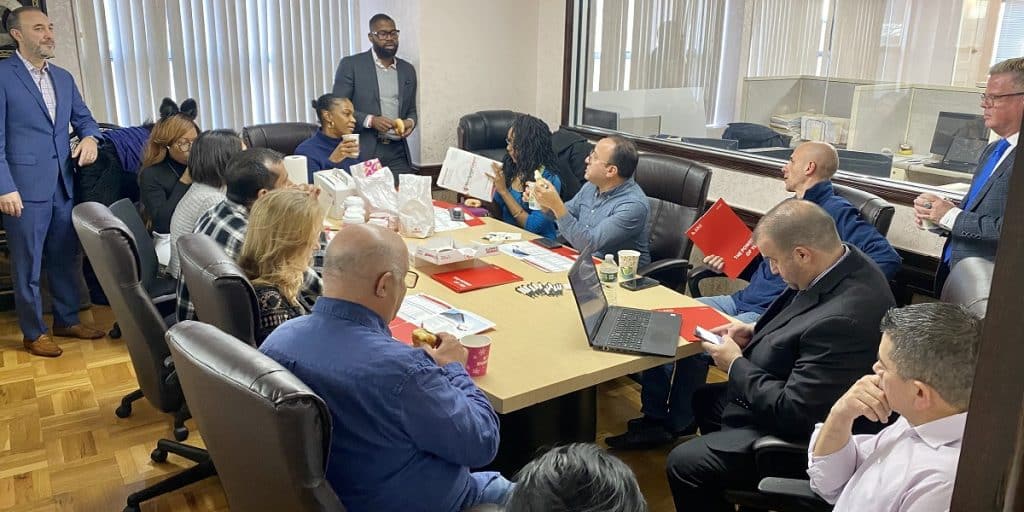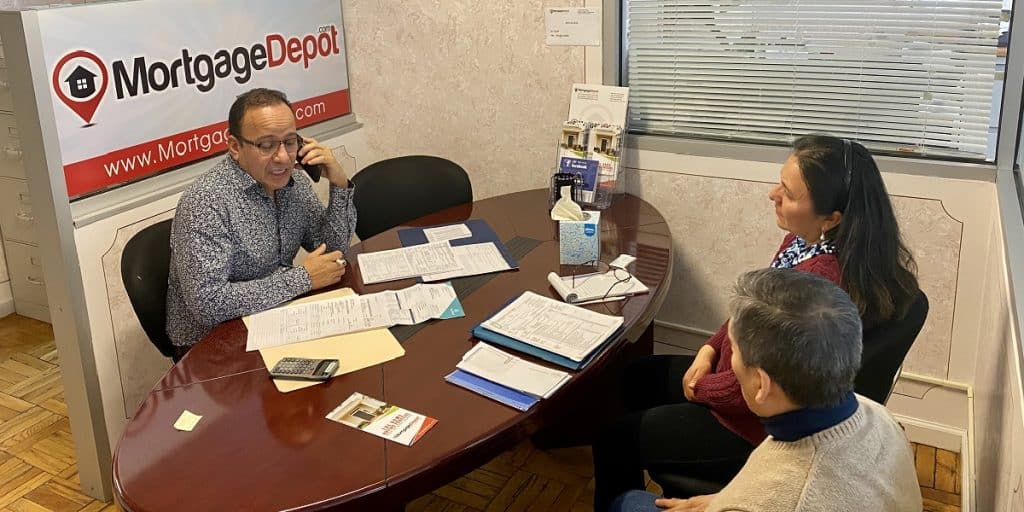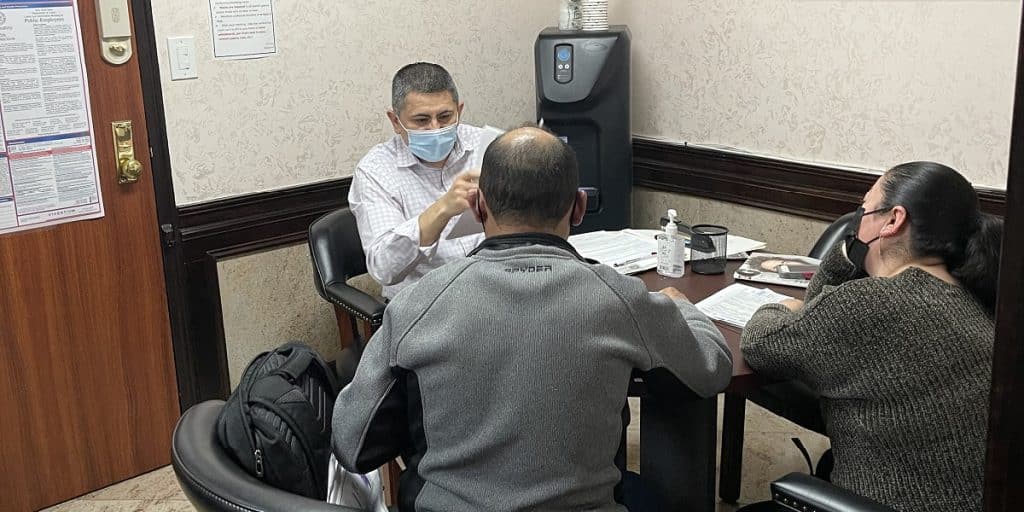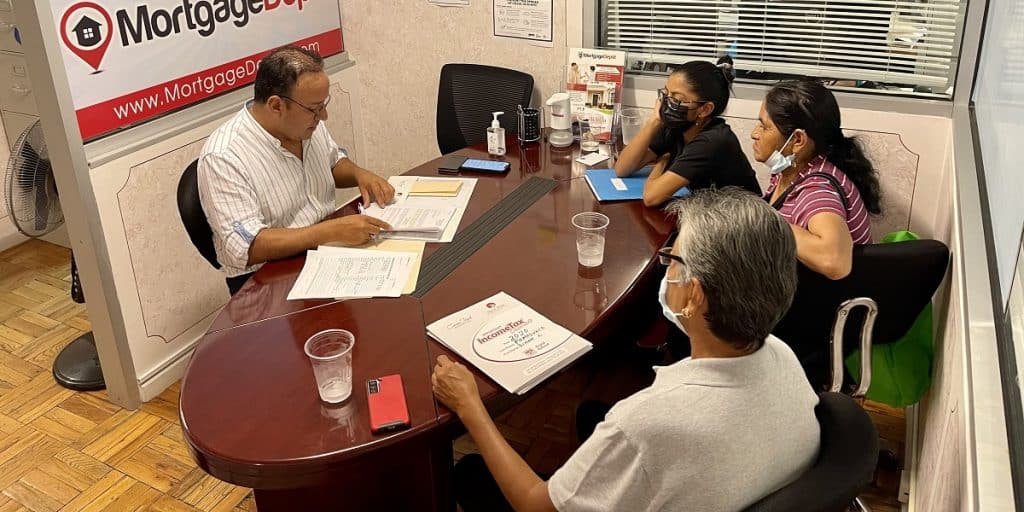
The current Coronavirus crisis is having a critical impact on the Mortgage Industry, which could potentially make the 2008 financial crisis pale in comparison. As always, we want to make sure you are fully informed and understand how these effects could translate into the real estate market.
How The Mortgage Market Works
Before we explain what is going on in the mortgage industry, we should probably do a quick recap on how the mortgage industry works, so this way it will make more sense.
Starting from the beginning :
- A borrower (Buyer or Homeowner looking to refinance) contacts a Mortgage Loan Originator to get a new mortgage loan. The loan is underwritten, approved, closed, and funded.
- Once this loan is closed and funded, the loan is then handed off to a Mortgage Loan Servicer (commonly referred to just as a “servicer”)- which may or may not be the same company that originated the loan.
- The Servicer maintains the loan (but does not own it). Which means they collect payments, pay taxes and insurance on the loan, answer buyer’s questions, etc. The payments the servicer collects from the borrower are forwarded to the owner of the loan.
- So Who actually owns the loan? The loan itself is sold to an aggregator (which is a fancy word for a company that negotiates with producers on behalf of groups of consumers) or directly to a government agency like Fannie Mae (FNMA), Freddie Mac (FHLMC), or Ginnie Mae (GNMA).
- The loan is then placed in a large bundle and handed off to an Investment Banker and converted into Mortgage-Backed Security (MBS). This shows up in the form of investments like Mutual Funds, Insurance Plans, Retirement Accounts, etc.
Make sense?
So why is it important to understand this? To obtain the right to service the loan, a servicer will typically pay 1% of the loan upfront, then receive a monthly payment of roughly 30 basis points (30 percent of 1 percent — or — 0030% of a loan amount) in annual income. Confusing, we know, but stay with us. This is important because it means that the breakeven point on the loan is approximately a little over three years (30bps x 3years = 90bps — still lower than the 1pt or 100bps they paid upfront). The longer the Servicer keeps a loan on their books, the more money they make off of the loan.
The problem we are running into is that when rates drop drastically (as they did a few weeks ago), homeowners rush to refinance their loans. Refinancing means their existing loan is paid off — and in often cases this is happening before the 3-year breakeven point. This causes losses for the Mortgage Lender who is servicing the loan. The more loans in their portfolio that have been refinanced in this manner, the higher the loss. Many of these recent refi’s are on loans that are only a year old (or in many cases even newer). That means even more significant losses.
Let us combine the losses those companies are experiencing form early payoffs with the fact that the Coronavirus has shut down the US economy and created an unprecedented amount of job losses. This increases the servicers’ risk, as many borrowers are having difficulty paying their mortgages on time. The Servicer must still make the payment to the investor even if they have not received the payment from the borrower. Usually, the Servicer has enough cushion to account for this. Still, in times of extremely high unemployment and financial crisis, delinquency levels are much higher, putting the Servicer in an unmanageable position.
Don’t worry!! The Government is Trying to Help… Ha
To help those experiencing job losses as a result of the Coronavirus, the government is offering forbearance (delayed) of mortgage loan payments to homeowners. But Servicers STILL have to make these payments to investors. Fortunately, there is a new program set-up to provide relief to Mortgage Servicers to bridge the gap to investors. This new program is new, and like most other new government programs put together quickly, details are still coming out, and the unknowns are many.
We are not sure if you knew this or not, but a borrower who has failed to make their first mortgage payment is called a First Term Default, and their loan becomes ineligible to be sold to an investor. Loans that can not be sold to an investor stay on a company’s credit line, and thus bog down their available credit. This restricts the Lender’s ability to clear their pipeline and get reimbursed with cash so they can fund new transactions.
What’s causing great concern is that given the recent drop in rates, there are a ton of new loans out there (both purchase and refinance) who’s first payment is not yet due. If these borrowers have lost their job since they closed their loan, or if they have filed for forbearance, the amount of transactions that will be considered first term defaults, and not qualify for sale is going to be significant.
If that all wasn’t enough, due to the sudden increase in uncertainty of repayment, the value of servicing was cut in half from 1% to .5%, the decreased value of a Lender’s servicing portfolio reduces their overall net worth which. Why is that a problem? A lender’s ability to lend is based on a multiple of their net worth. By decreasing the value of their servicing portfolio asset, along with the cash paid for margin calls, reduces their capacity to lend.
Shocker… The Government’s Actions Have Unintended Consequences
The Fed’s desire to bring mortgage rates down hasn’t just damaged servicing portfolios, and it’s also creating chaos around a lender’s ability to hedge their risk.
Mortgage rates are based on the trading of Mortgage-Backed Securities (those bundled and re-sold loans in the form of Mutual Funds, retirement accounts, and insurance plans). As the MBS rise in price, interest rates improve, and lower. Lenders lock a borrower’s rate to guarantee the borrower that interest rate for a period of time or until the transaction is closed. The Lender is at risk, and on the hook, for any MBS price changes between the time the rate is locked and the time the loan is closed.
During that period, if MBS prices decline, and rates rise, the Lender is obligated to buy down the mortgage rate to whatever rate they promised their buyer. In these cases, the Lender’s cost to buy down the borrower’s rate is offset by the lenders’ gains.
If MBS prices rise and improve, mortgage rates decline. On paper, the Lender should be able to close the loan at a better price than promised to the borrower, giving the Lender some additional profits. So, the ebb and flow of MBS prices should ideally balance out and deliver the borrower what was promised and negate risk from the Lender.
But to reduce mortgage rates, the Fed has purchased enormous amounts of MBSs, causing the price to rise dramatically and swiftly, and mortgage rates to drop significantly, and lenders suffer huge losses. These losses appear to be offset by potential market gains on future loans closing. But Broker-Dealers will not wait on the possibility of loans losing and demands immediate margin call. Lenders are now paying tens of millions of dollars in margin calls.
While the Feds believe they are stimulating lending, they’re actually doing the exact opposite. The market for Government loans, jumbo loans, and loans that don’t fit ideal parameters have all but dried up. And many lenders have no choice but to reduce the number of their transactions by increasing mortgage rates and reducing the term that they are willing to guarantee a rate lock. We have seen this by many of the big banks whose rates are advertised in the low to mid 4% range (Not going to mention any names here).
Furthering these unintended consequences, the Fed announced another interest rate cut, lowering the fund rate to virtually 0%. This rate cut was poorly communicated to the public. The average person misunderstood the rate cut to be a mortgage interest rate cut, rather than a federal fund rate cut. The misunderstanding caused borrowers currently in the mortgage process to break their rate locks and try to jump ship to lower rates. This caused a dramatic increase in losses since many of these loans did not close.
Minimizing the Risk
With so much uncertainty in the world, let alone the market, many lenders have taken steps to minimize their risk. To minimize the risk, just about every Non-QM (non-qualified mortgage) lender and loan program (portfolio loans, bank statement loans, etc.) has been put on pause. Jumbo loans across the industry have also been put on pause. When I say put on pause, I mean no longer lending. That means a borrower who is under contract trying to buy their new home and are in the mortgage process, have been told that their loan can not proceed, and the loan can not currently close.
Many lenders have raised their qualification requirements on government loans from 580 to 640 or even 660 in some cases. That means VA loans that have borrowers with credit scores under 640 (or 660 depending on the Lender) can no longer get approved to purchase their new home. – Don’t worry, and we have not adjusted anything. Our minimum credit score is still 580 for VA and FHA loans –
Other lenders have stopped taking part in bond loans, which make up the majority of the down payment assistance programs across the country. These loans are notorious for making $0 in profit and are used by risky clients. We say risky clients because most buyers that purchase their home through a bond loan program either have limited income or credit issues (or a combination of both). The high risk, coupled with the lack of profitability, make these loans less than desirable to put on a company’s lines of credit right now, especially when their pipelines are full of quality (and lucrative) refinance opportunities. Thus many companies have stopped doing them.
Across the industry, verification of employment (VOE) is changing. Until Wednesday, the industry-standard was to get a written Verification of employment upfront in the beginning of the mortgage process, which lays out and breaks down, a borrower work history, income, likelihood of continuance, etc., and then get a verbal verification of employment at the very end of the process (no later than 10 days out from closing) to make sure that nothing has changed from the written VOE (The borrower did not’ get fired, didn’t put in his 2 weeks notice, the company didn’t go out of business, etc.). Well, as of Wednesday, the final Verbal VOE (VVOE) now has to be completed within two calendar days of closing, not ten days. This is creating a problem because so many companies are on skeleton crews, so many others are working from home. It has proved challenging for many to get in contact with employers to get the final VOE. If the VVOE is not complete two days before closing, then the loan can not close, and the closing has to be delayed until the VVOE is complete. This very condensed timeline puts a lot of strain on already very busy loan processors, and employers who are trying to keep their businesses going during these trying times.
What Needs To Be Done
Fortunately, there are many smart people in the Mortgage Industry who are doing everything to navigate current conditions. But the Fed MUST temporarily slow MBS purchases to allow pipelines to clear. Lawmakers need to allow for first payment defaults due to forbearance to be sellable. And the Fed must clearly communicate to the public that Mortgage Rates and Fed Funds Rate are not the same things.
We hope this has helped better explain what is happening in the mortgage markets. We know a lot questions are floating around and a lot of uncertainty. Please feel free to reach out to us for more information about the current market health.
Have questions or need help?
Call us now at 800-220-LOAN
Request a call back or email us your questions!







